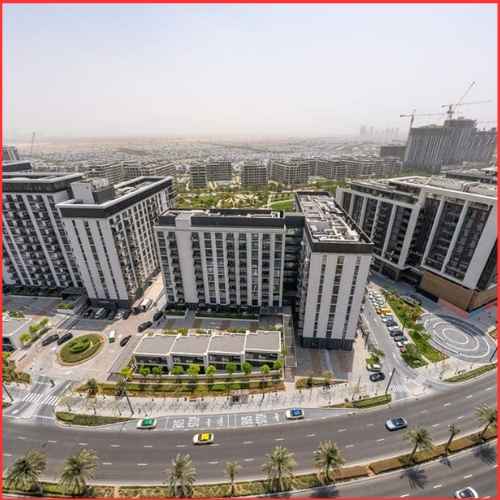The modern working class of the world has been transformed into remote work in which employees get the relaxation of going into office spaces and sitting in front of their boss. Due to this trend, the commercial real estate sector has witnessed a huge loss. This loss has also affected the world’s great economies, like the USA, where the value of commercial real estate has diminished by 11 percent since March 2022, primarily due to the surge in remote work.
No doubt, COVID-19 has played a major role in offering remote work as the most stable medium for employees and companies. The remote working trend in the corporate world has also left a great impact on commercial real estate globally.

Image credit- LinkedIn
Today, in this article, we will delve into the aspect where the commercial real estate sector has faced a deep loss from the remote work nature in the corporate world.
Remote work nature has reduced the requirement for office space, which also has diminished by 11 percent since March 2022, primarily due to the surge in remote work.
Historical Background Examining the historical context of changing work patterns is essential to understanding how distant employment affects international real estate markets. Despite the decades-long dominance of the traditional office-centric work model, technological developments—particularly the internet—progressively opened up the possibility of remote employment.
Telecommuting, first made possible by the telegraph in the late 19th century, was an early experiment in remote work. However, it wasn’t until the late 20th century, with the advent of personal computers and the internet, that remote work truly gained traction. The late 1990s and early 2000s saw a significant rise in remote work, fueled by the dot-com boom, but this growth was short-lived as the dot-com bubble burst and the subsequent economic downturn caused a pullback.
As businesses and employees adopted this remote work model in the world, the real estate industry found itself at a crossroads, navigating unprecedented challenges and opportunities.
Table of Contents
| S. No. | Impact of Remote Work on Commercial Real Estate Globally |
| 1 | A shifting phase |
| 2 | Urban vs. suburban markets |
| 3 | Future Possibilities |
| 4 | Influence on Property Prices and Rental Yields |
| 5 | Technological Integration in Real Estate Investment |
| 6 | Investment Opportunities in Home Office Design |
| 7 | Government Policies and Support for Remote Work |
| 8 | Long-Term Effects on Urban Development |
| 9 | Conclusion |
A Shifting Phase
As the world adopted remote and hybrid modes of working in the corporate world, the office space also changed and started to look different. Companies from all over the world have realised that remote work is not only flexible but, on the other hand, it is cost-effective, due to which the demand for traditional office spaces has decreased. This has led to a huge impact on real estate departments all over the world. This change has uniformly affected all market areas. Here’s how the landscape has evolved.
1. Urban vs. suburban markets
The urban centre companies reduced the office space, opting for flexible work arrangements. Conversely, suburban office markets saw increased demand as employees sought more spacious and convenient work locations closer to home.
2. Flexibility and Adaptation
The rise of remote work prompted the growth of flexible office space providers, such as WeWork and Regus. These providers offer companies the agility to scale up or down their office space needs as required, reducing long-term lease commitments.
3. Repurposing and Redevelopment
Some commercial real estate developers began repurposing office spaces into mixed-use properties, residential units, or alternative commercial uses. This adaptive approach aimed to make the most of existing assets.
4. Tech-Enabled Offices
Forward-thinking landlords invested in technology to create smarter, safer, and more attractive office spaces. Features like touchless entry systems, improved air filtration, and advanced video conferencing capabilities became selling points.
Future Possibilities
While the initial impact of remote work on commercial real estate was significant, it’s important to recognise that the industry is far from obsolete. Many businesses still value physical office space for collaboration, company culture, and productivity. However, the office of the future is likely to transform:
1. Hybrid Work Models
A hybrid work paradigm that blends in-office and remote work is becoming more and more common. In order to adapt to this change, businesses are reevaluating their workplace requirements and concentrating on developing flexible, collaborative environments.
2. Wellness and Amenities
Due to the pandemic, health and wellness factors have taken centre stage in office design. Fitness centres and outdoor spaces that put employee well-being first are becoming more and more popular.
3. Tech Integration
Technology will remain essential in the office setting, facilitating smooth remote work and improving the general working atmosphere.
Influence on Property Prices and Rental Yields
The shift in commercial real estate dynamics is also affecting property prices and rental yields. Here’s how:
- Changing Office Space Requirements: As businesses opt for smaller office spaces or co-working options, traditional office spaces are facing reduced demand. This change is leading to increased competition among landlords and property owners.
- Impact on Rental Prices: In areas like Gurugram, rental yields for commercial properties have dropped by eight percent. This decline reflects the increasing preference for flexible workspace solutions over conventional office leases. As businesses choose co-working spaces or smaller offices, landlords must adjust their pricing to attract tenants.
- Market Competition: The traditional office market is becoming more competitive as property owners strive to fill vacancies. This competition can result in lower rental prices and may encourage landlords to offer incentives, such as flexible lease terms or additional amenities to attract tenants.
- Investment Returns: The fluctuations in rental prices and the changing landscape of office space requirements impact the overall returns on commercial real estate investments. Investors need to be aware of these trends and adjust their strategies accordingly to maximise their investment potential.
Technological Integration in Real Estate Investment
Technological advancements are transforming the real estate investment landscape in India by enhancing operations and improving customer experiences. Key changes include:
- Digital Platforms: Online platforms streamline property transactions, allowing users to browse listings and complete transactions more efficiently.
- Virtual Tours and Augmented Reality: Agents and developers are using virtual tours and AR to provide immersive property experiences, enabling potential buyers to explore homes remotely.
- Data Analytics: Investors leverage data analytics to identify market trends and opportunities, helping them make informed investment decisions. Many companies offer insights into real estate trends.
- Property Management Solutions: Technology simplifies property management by improving tenant communications and maintenance handling, enhancing overall efficiency.
Investment Opportunities in Home Office Design
The rise of remote working has created a demand for home office design and renovation services. Key areas of investment include:
- Functional Workspaces: Buyers seek properties with dedicated work areas, including ergonomic furniture, soundproofing, and efficient lighting solutions to enhance productivity.
- Financial Incentives: According to Global Workplace Analytics, companies can save approximately nine lakh annually for each employee who works remotely half the time. This has increased investment in home office environments.
Government Policies and Support for Remote Work
The Indian government is increasingly recognising the importance of supporting remote work through various policy initiatives and infrastructure improvements. Key aspects include:
- Digital India Initiative: Launched in 2024, this initiative aims to transform India into a digitally empowered society. A crucial element of this initiative is improving internet connectivity, especially in rural areas. Enhanced connectivity ensures that more people can work from home effectively, regardless of location.
- Incentives for Businesses: The government is encouraging businesses to adopt flexible work arrangements by providing tax benefits and subsidies for infrastructure development that support remote work. This includes investments in technology and workspace solutions.
- Skill Development Programmes: To ensure that the workforce is prepared for remote work, the government is investing in skill development programs that focus on digital literacy and remote working tools. This helps individuals adapt to new work environments, making them more competitive in the job market.
- Telecom Reforms: Recent reforms in the telecommunications sector aim to reduce costs and improve service quality. These changes make it easier for employees to work remotely by ensuring stable internet connections, which are essential for video conferencing and collaborative work.
Long-Term Effects on Urban Development
The economy’s increasing reliance on distant work has important ramifications for urban development.
Mixed-Use Developments: It is anticipated that mixed-use developments—which integrate residential, commercial, and recreational areas—will be given priority in future urban planning. This strategy eliminates the need for lengthy trips by enabling locals to live, work, and enjoy leisure activities all in one location.
Decentralisation of Urban Areas: Decentralisation is becoming more popular as more people work from home. This change makes it possible for people to relocate from densely populated urban areas to suburban or rural areas, reducing traffic and fostering thriving communities outside of big cities.
Sustainable Urban Expansion: Mixed-use developments are emphasised, which encourages sustainable urban expansion. It promotes the development of walkable neighbourhoods with convenient access to parks, public transportation, and other necessities.
Conclusion
Remote work has significantly reshaped the global commercial real estate landscape. As companies adopt flexible and hybrid work models, demand for traditional office spaces, particularly in central locations, has declined. This shift has led to increased interest in co-working spaces, suburban offices, and mixed-use developments. However, the impact varies by industry and region, with some sectors continuing to prioritise physical office spaces. The future of commercial real estate will be defined by adaptability, with a focus on repurposing properties, sustainability, and creating environments that align with evolving work patterns and employee needs.















